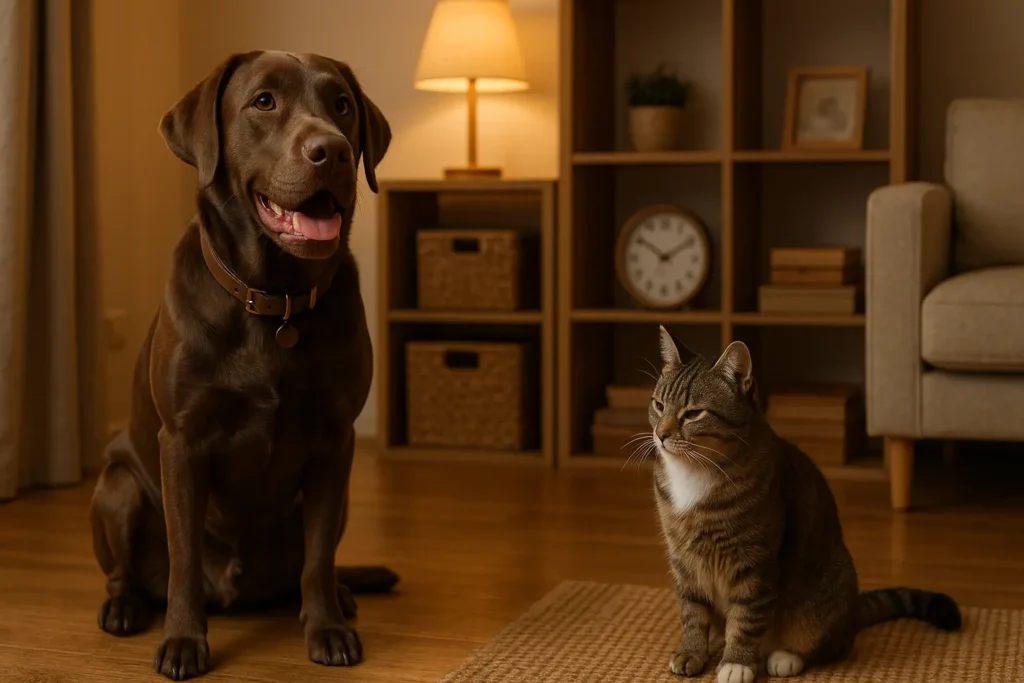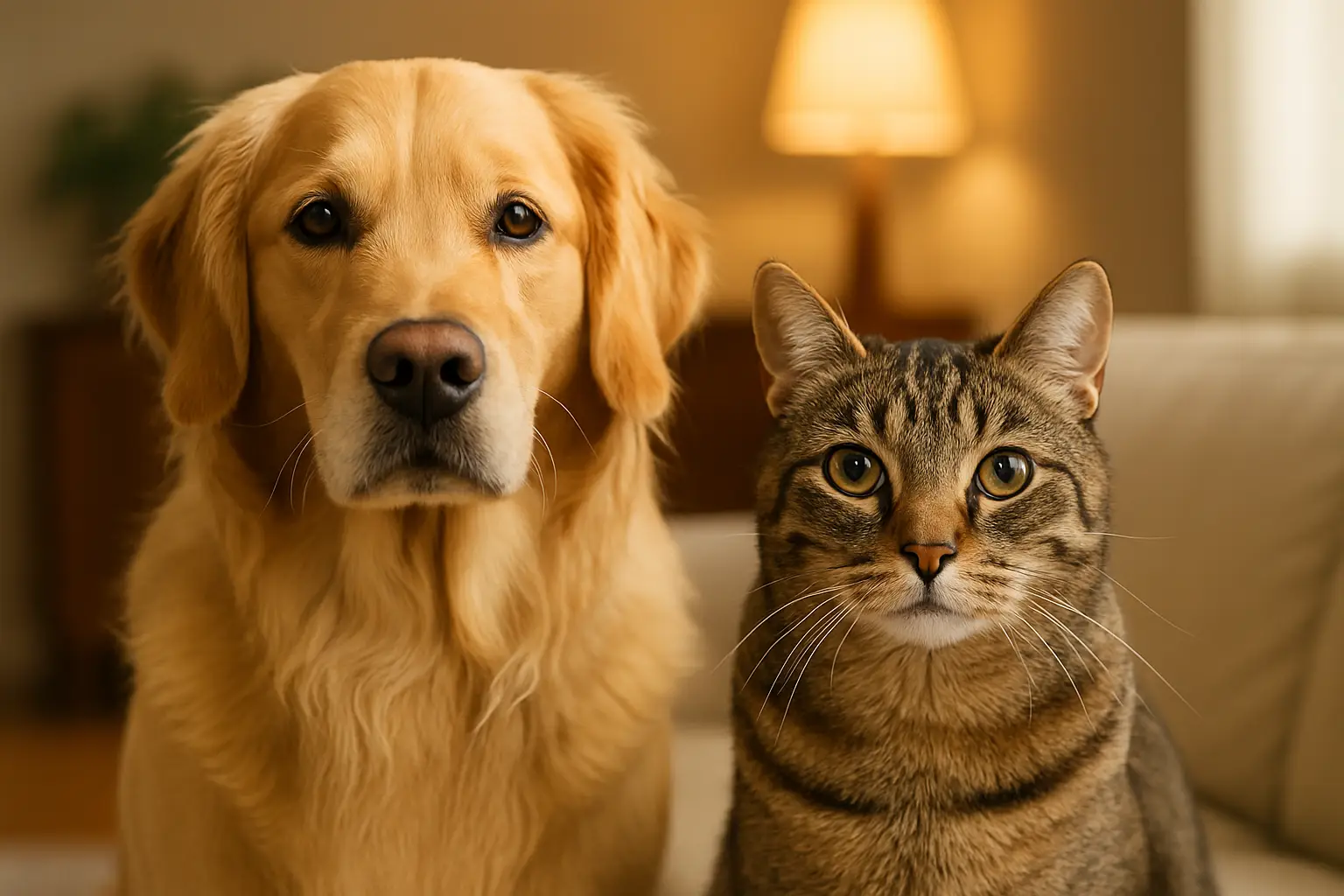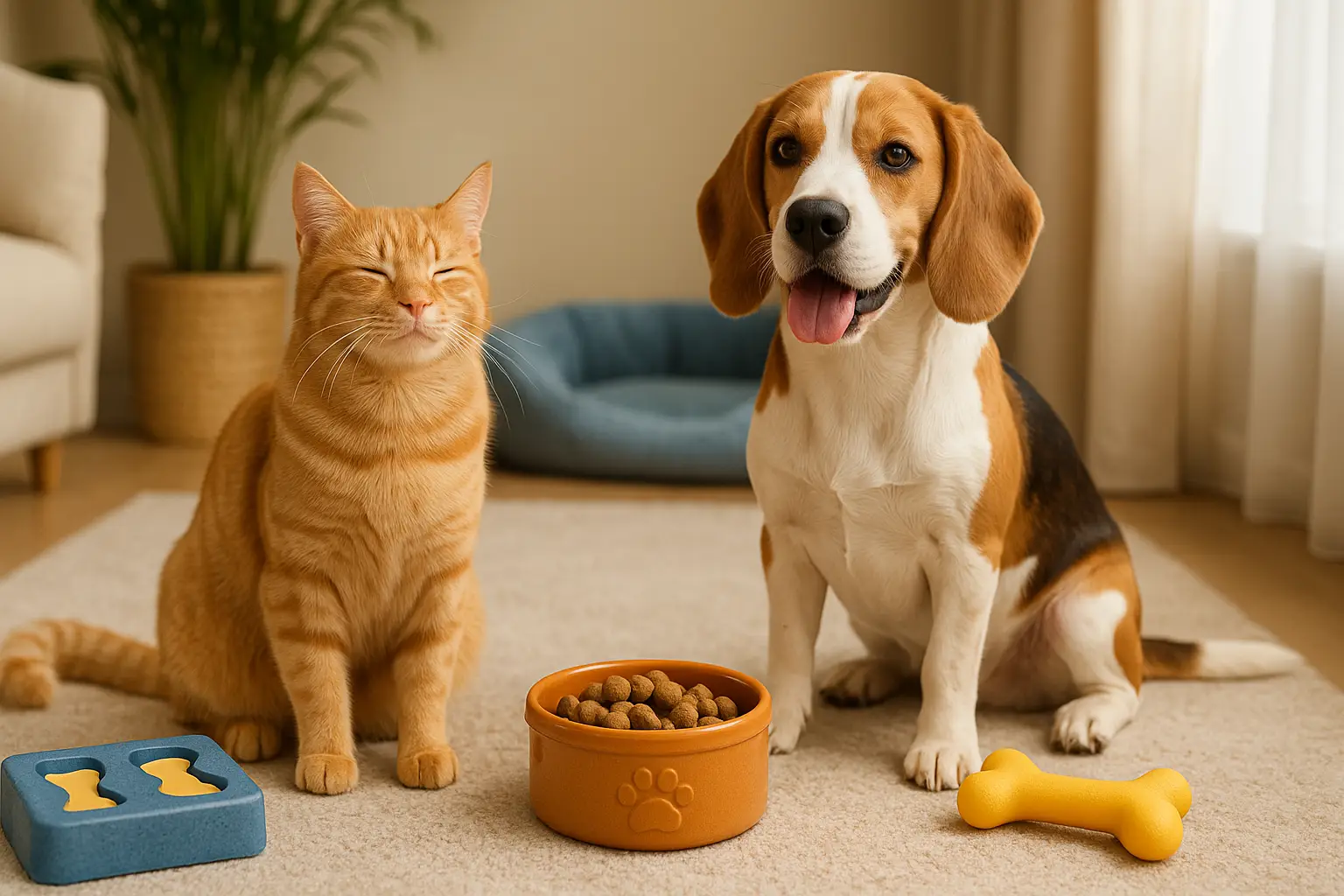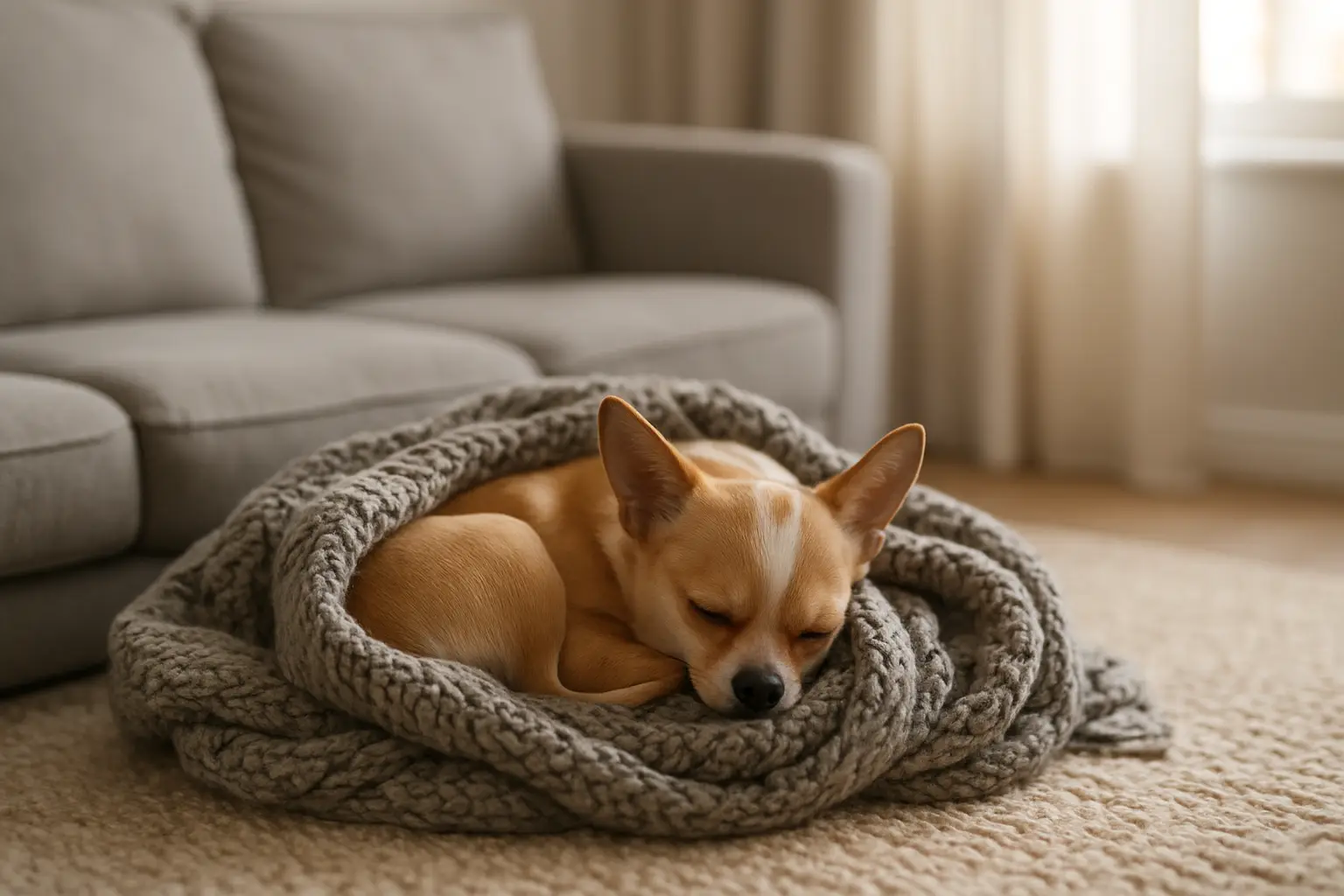How to Create a Pet-Friendly Daily Schedule That Works for You and Your Pet
One of the most powerful things you can do for your pet’s well-being is to build a consistent, predictable daily schedule. While it might sound like a simple step, structure gives pets a sense of safety and balance. Dogs and cats alike thrive when their environment and routine support their natural rhythms, instincts, and behaviors.
In this guide, you’ll learn how to design a pet-friendly daily schedule that complements your lifestyle—whether you work from home, have a full-time job, or juggle multiple responsibilities. This isn’t just about keeping pets busy—it’s about giving them confidence, connection, and a meaningful, joyful life alongside you.

Why Structure Matters for Pets
Just like children, pets find comfort in knowing what to expect. A reliable routine provides emotional stability and helps prevent behavioral problems.
Benefits of a Pet-Friendly Schedule:
- Reduces anxiety and stress
- Improves sleep and energy cycles
- Supports bathroom and feeding habits
- Encourages better behavior
- Deepens the bond between pet and owner
Without structure, pets may feel confused, restless, or bored—leading to excessive barking, destructive behavior, or even depression.
Understand Your Pet’s Natural Rhythms
Different pets have different energy cycles. Understanding your dog or cat’s preferences will help you design a realistic and satisfying daily routine.
Dogs:
- Thrive with scheduled activity and rest
- Most are alert in the morning and evening
- Need 1–2 structured activity blocks per day
Cats:
- Tend to follow a crepuscular schedule (active at dawn and dusk)
- Sleep 12–16 hours daily, but prefer predictable feeding and playtime
- Enjoy short, stimulating bursts of play throughout the day
Keep this in mind when mapping out daily tasks.
Step 1: Morning Routine – Start the Day Right
Your pet’s morning sets the tone for the entire day. A good morning routine gives them clarity and structure, preparing them for calm, healthy behavior.
Morning Must-Haves:
- Wake-Up & Bathroom Break
Dogs need to go out first thing. Cats should have their litter cleaned early to encourage continued use. - Fresh Water and Feeding
Feed your pet at the same time each day. Dogs typically eat twice a day; cats may prefer two or three smaller meals. - Gentle Movement
Take your dog for a short walk or play with your cat for 5–10 minutes to get their bodies moving. - Quiet Time While You Get Ready
Provide a comfy spot with a chew toy or soft blanket so your pet can relax while you handle your morning tasks.
⏰ Suggested Morning Schedule (Adjust as Needed):
- 7:00 AM – Wake up, potty time
- 7:15 AM – Feed pets, refresh water
- 7:30 AM – Short walk/play session
- 8:00 AM – Calm rest space as you prepare for the day
Step 2: Midday Routine – Stimulate, Relax, and Reset
Midday is often a long, quiet stretch—especially if you’re away. This is the time when pets are prone to boredom. Build in moments of comfort and engagement to break up their day.
Midday Activities:
- Bathroom Break or Litter Check
- Interactive Toys (KONGs, puzzle feeders, cat tunnels)
- Background Sound (soft music or pet-friendly TV)
- Safe Window Access for bird-watching or sunbathing
- Pet Camera Check-In (if you’re away)
If you’re working from home, incorporate:
- A 10-minute fetch session
- Litter cleaning during your lunch break
- A lap cuddle during your downtime
⏰ Midday Example:
- 12:00 PM – Bathroom break/check litter
- 12:15 PM – Enrichment toys
- 12:30 PM – Quiet time or nap
Step 3: Afternoon Routine – Gradual Engagement
As energy begins to rise again in the afternoon, gently reintroduce stimulation before the evening burst of activity.
- Rotate toys to keep things fresh
- Grooming session (brushing or gentle massage)
- Mini training practice (sit, stay, come, etc.)
- Window time or puzzle toys
Dogs benefit from short leash walks, while cats enjoy structured play (laser pointers, feather wands).
⏰ Afternoon Flow:
- 3:30 PM – Calm interaction or light grooming
- 4:00 PM – Toy rotation or short playtime
- 4:30 PM – Down time
Step 4: Evening Routine – Energy, Connection, and Calm
Evenings are often the most active time for pets. They’ve stored energy throughout the day and want to engage. Use this time for bonding and exercise—but also start winding down before bedtime.
Evening Essentials:
- Long walk or vigorous play session
- Interactive feeding (snuffle mats, food-dispensing toys)
- Training or learning games
- Feeding and fresh water
- Cuddle or relax time with the family
⏰ Evening Schedule Example:
- 6:00 PM – Walk or playtime
- 6:45 PM – Dinner
- 7:30 PM – Bonding time (TV cuddle, brushing, etc.)
- 8:30 PM – Gentle play or chew toy
- 9:00 PM – Wind-down into bedtime
Step 5: Nighttime Routine – Rest and Security
Create a consistent wind-down process so your pet feels safe and secure overnight.
- Final potty break or litter clean
- Refill water bowl
- Calming music or white noise
- Designated sleeping spot (bed, crate, pillow)
- Low-stimulation environment (dim lights, no TV)
Avoid roughhousing or overfeeding right before bed, which may lead to poor sleep or accidents.
⏰ Nighttime Routine:
- 9:30 PM – Final bathroom break
- 10:00 PM – Quiet time in bed
Adjusting Your Schedule for Your Lifestyle
If You Work Outside the Home:
- Hire a midday dog walker
- Use automatic feeders for cats
- Leave comfort toys and soft blankets
- Offer a long walk before and after work
If You Work from Home:
- Take short play or training breaks
- Don’t overstimulate—your presence alone is engaging
- Keep a consistent lunch, walk, and quiet time schedule
If You Work Shifts or Irregular Hours:
- Create an alternate “morning-evening-night” rhythm based on your availability
- Keep feeding times regular, even if you’re off schedule
- Use blackout curtains to simulate night/day
Integrating Training, Exercise, and Enrichment
You don’t have to schedule an hour for each need. Many activities meet multiple goals:
- A walk = exercise + bonding
- Puzzle feeders = feeding + mental stimulation
- Trick training = brain work + enrichment + behavior shaping
Aim for at least:
- 30–60 minutes of physical activity for dogs
- 20–30 minutes of play and engagement for cats
- 5–10 minutes of training for either, 3–5 times per week
Tips to Maintain Routine Long-Term
- Use alarms or reminders to stay on track.
- Keep supplies accessible—toys, leashes, brushes.
- Stay flexible—life happens, and your pet can adapt if you’re consistent overall.
- Rotate activities to keep things interesting.
- Reward calm behavior and celebrate when your pet responds well to schedule changes.
Sample Daily Schedule: Dog (Working Owner)
- 7:00 AM – Potty and short walk
- 7:30 AM – Breakfast
- 8:00 AM – Chew toy, rest
- 12:00 PM – Dog walker visit
- 12:30 PM – Nap
- 5:30 PM – Evening walk
- 6:15 PM – Dinner
- 7:00 PM – Training or cuddle
- 9:00 PM – Wind-down
- 10:00 PM – Final bathroom break and bed
Sample Daily Schedule: Cat (Indoor, Solo Owner)
- 7:00 AM – Breakfast and litter box check
- 7:30 AM – Wand toy session
- 8:00 AM – Window perch time
- 12:00 PM – Puzzle feeder
- 2:00 PM – Nap in favorite sunny spot
- 6:00 PM – Dinner and light play
- 7:00 PM – Lap cuddle or brushing
- 9:00 PM – Soft toy chase
- 10:00 PM – Clean litter box, bedtime
Signs Your Schedule Is Working
- Calm transitions between activities
- Fewer behavior issues
- Improved appetite and bathroom habits
- Predictable sleep cycles
- A more peaceful home environment
If your pet seems hyper, withdrawn, clingy, or destructive, consider whether they’re missing structure, enrichment, or rest.
Final Thoughts: Structure Builds Trust
Building a pet-friendly daily schedule isn’t about perfection—it’s about care, communication, and creating a rhythm that makes life better for both you and your pet.
With just a bit of planning and consistency, you’ll notice how much more confident, content, and connected your furry friend becomes. And in return, you’ll experience the joy of a home that flows with comfort, playfulness, and peace.
Start simple, be patient, and let your routine grow with you.




Post Comment